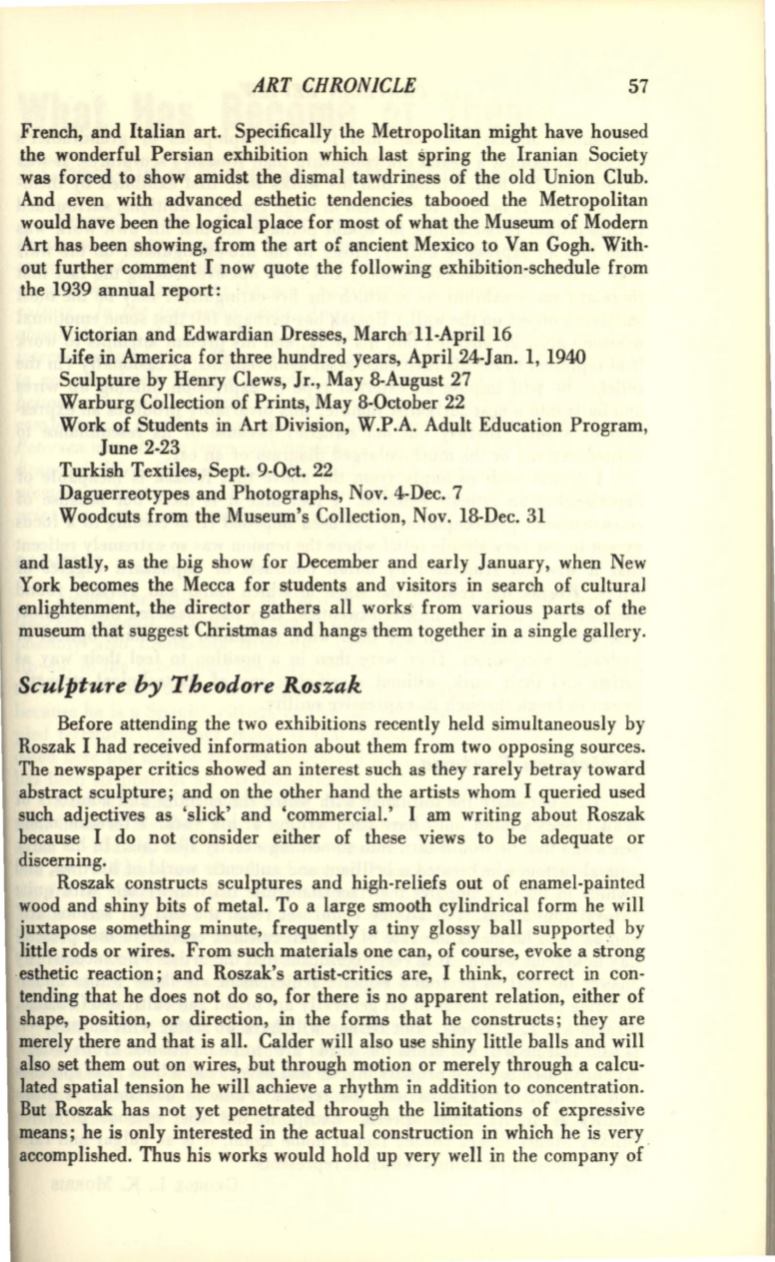
ART CHRONICLE
57
French, and Italian art. Specifically the Metropolitan might have housed
the wonderful Persian exhibition which last spring the Iranian Society
was forced to show amidst the dismal tawdriness of the old Union Club.
And even with advanced esthetic tendencies tabooed the Metropolitan
would have been the logical place for most of what the Museum of Modern
Art has been showing, from the art of ancient Mexico to Van Gogh. With·
out further comment I now quote the following exhibition-schedule from
the 1939 annual report:
Victorian and Edwardian Dresses, March 11-April 16
Life in America for three hundred years, April 24-Jan. 1, 1940
Sculpture by Henry Clews, Jr., May 8-August 27
Warburg Collection of Prints, May 8-0ctober 22
Work of Students in
Art
Division, W.P.A. Adult Education Program,
June 2-23
Turkish Textiles, Sept. 9-0ct. 22
Daguerreotypes and Photographs, Nov. 4-Dec. 7
Woodcuts from the Museum's Collection, Nov. 18-Dec. 31
and lastly, as the big show for December and early January, when New
York becomes the Mecca for students and visitors in search of cultural
enlightenment, the director gathers all works from various parts of the
museum that suggest Christmas and hangs them together in a single gallery.
Sculpture
by
Theodore Roszak
Before attending the two exhibitions recently held simultaneously by
Roszak I had received information about them from two opposing sources.
The newspaper critics showed an interest such as they rarely betray toward
abstract sculpture; and on the other hand the artists whom I queried used
such adjectives as 'slick' and 'commercial.' I am writing about Roszak
because I do not consider either of these views to be adequate or
discerning.
Roszak constructs sculptures and high-reliefs out of enamel-painted
wood and shiny bits of metal. To a large smooth cylindrical form he will
juxtapose something minute, frequently a tiny glossy ball supported by
little rods or wires. From such materials one can, of course, evoke a strong
.esthetic reaction; and Roszak's artist-critics are, I think, correct in con–
tending that he does not do so, for there is no apparent relation, either of
shape, position, or direction, in the forms that he constructs; they are
merely there and that is all. Calder will also use shiny little balls and will
also set them out on wires, but through motion or merely through a calcu–
lated spatial tension he will achieve a rhythm in addition to concentration.
But Roszak has not yet penetrated through the limitations of expressive
means; he is only interested in the actual construction in which he is very
accomplished. Thus his works would hold up very well in the company of ·


